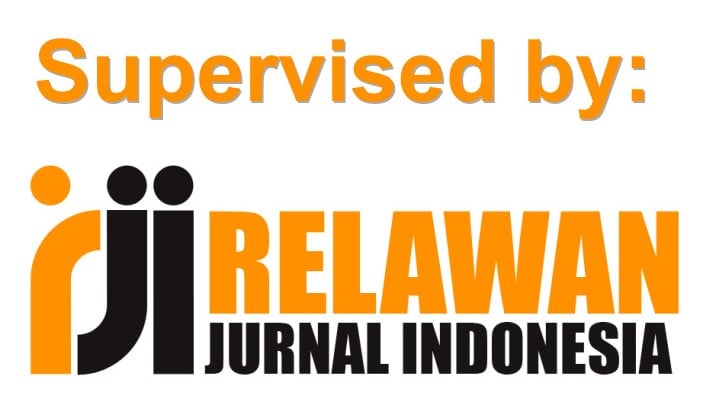Religiusitas dan Agresivitas Siswa SMA X Banjarmasin
DOI:
https://doi.org/10.18592/jsi.v9i2.5456Keywords:
Agresivitas, Religiusitas, Siswa, Aggressiveness, Religiosity, StudentsAbstract
An environment with a high crime will potentially affect student aggression. One way to reduce aggressiveness is to instil religious values through learning at school. However, religious learning in schools is still relatively minimal. The purpose of this study was to determine the correlation between religiosity and student aggressiveness. The population in this study was 214 students, with a sample of 60 students from SMA X in Banjarmasin. The sample in this study was taken by probability sampling technique. The data collection instrument uses a Likert model scale, and data analysis uses Product Moment correlation with the help of SPSS for window 21. Based on the calculation results, it is known that there is a significant negative correlation (-0.451) between religiosity and aggressiveness, so that the higher the student's religiosity, the lower the aggressiveness: students or vice versa.References
Agustriani, H. (2009). Psikologi Perkembangan Remaja. PT. Refika Aditama.
Ahyani, L. N., & Astuti, R. D. (2013). Pengaruh CBT dalam Mengurangi Perilaku Agresif Pada Remaja. UI Sultan Agung.
Ancok, D., & Suroso, F. N. (2011). Psikologi Islami,. Solusi Islam Atas Problem Psikologi. Pustaka Pelajar.
Arifin, F. T. (2016). Studi Kasus Perilaku Agresif Pada Siswa SMTA Se-Kaecamatan Badegan Kabupaten Ponorogo. Jurnal BK, 6(2).
Arikunto, S. (2016). Prosedur Penelitian: Suatu Pendekatan Praktek. Rineka Cipta.
Assidiqi, H. (2015). Paduan IBM SPSS 22. Labkom PMTK UIN Antasari.
Baron, R. A., & Byrne, D. (2012). Psikologi Sosial. Erlangga.
Daradjat, Z. (2010). Ilmu Jiwa Agama. PT. Bulan Bintang.
Ghufron, M. N., & Risnawati, N. R. (2017). Teori-Teori Psikologi. Ar-Ruzz Media.
Jalaludin. (2010). Psikologi Agama. PT. Grafindo Media Pratama.
Kumalasari, D. (2018). Hubungan Antara Adiksi Game Online Dengan Perilaku Agresif Pada Remaja Di Sma Negeri 1 Banguntapan Yogyakarta. Universitas Mercubuana Yogyakarta.
Laura, A. K. (2010). Psikologi Umum Sebuah Pandangan Apresiatif. Salemba Humanika.
Nisfiannoor, M., & Yulianti, E. (2005). Perbandingan Perilaku Agresif Antara Remaja Yang Berasal Dari Keluarga Bercerai Dengan Keluarga Utuh. Jurnal Psikologi, 3(4).
Rakhmat, J. (2005). Psikologi Agama: Sebuah Pengantar. Mizan.
Sarwono, S. W. (2013). Pengantar Psikologi Umum. PT. Raja Grafindo Persada.
Sugiyono. (2013). Metode Penelitian Kuantitatif, Kualitatif dan R&D. Alfabeta.
Trio, D. (2017, June 12). Mau Bikin Ricuh KS Tubun, Remaja yang siap tempur ini kocar kacir dihadang polisi. Banjarmasin Post: Kriminalitas Banjarmasin. http://banjarmasin.tribunnews.com/2017/06/12
Ukhtia, F., Reza, I. F., & Zaharuddin, Z. (2016). Hubungan Antara Religiusitas Dengan Kecemasan Akademik Pada Siswa Madrasah Aliyah Negeri. Psikis: Jurnal Psikologi Islami, 2(2).
Wahyuddin, A., Ilyas, M., Saifulloh, M., & Muhibbin, Z. (2009). Pendidikan Agama Islam. PT. Grafindo Media Pratama.
Winarsunu, T. (2014). Statistik dalam Penelitian Psikologi dan Pendidikan. UMM Press.
Yamin, M. (2017, June 12). Urgensi Pendidikan Transformatif. Banjarmasin Tribun News. http://banjarmasin.tribunnews.com/2017/06/12
Downloads
Published
How to Cite
Issue
Section
License
Copyright (c) 2022 Akhmad Rozali, shanty komalasari

This work is licensed under a Creative Commons Attribution-NonCommercial 4.0 International License.
Authors who publish with this journal agree to the following terms:
- Authors retain copyright and grant the journal right of first publication with the work simultaneously licensed under a Creative Commons Attribution License that allows others to share the work with an acknowledgment of the work's authorship and initial publication in this journal.
- Authors can enter into separate, additional contractual arrangements for the non-exclusive distribution of the journal's published version of the work (e.g., post it to an institutional repository or edit it in a book), with an acknowledgment of its initial publication in this journal.
- Authors are permitted and encouraged to post their work online (e.g., in institutional repositories or on their website) before and during the submission process, as it can lead to productive exchanges, as well as earlier and greater citation of published work (See The Effect of Open Access).





















